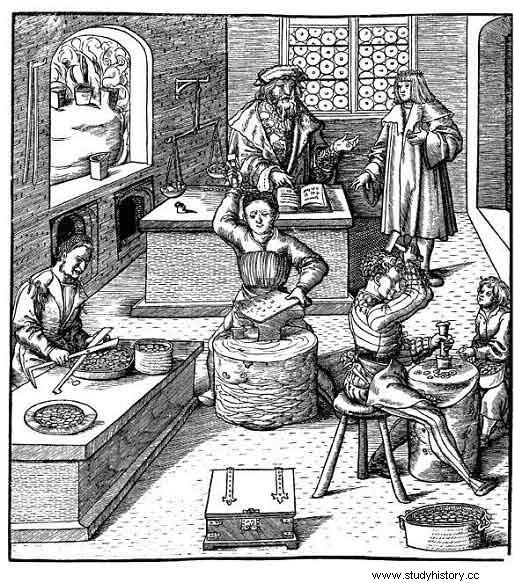The Mints (sikka , Arabic word meaning die) were the Mint Houses of the different Taifa kingdoms (Muslim kingdoms that emerged after the abolition of the Caliphate in 1031 and later with the collapse of the Almoravid and Alhomade empires). Each one of the Taifa kinglets minted their own currency as a sign of power and independence. Now, after the crisis and the restructuring of the Spanish financial system, it seems that "a certain order" has been established, but until two days ago our "dear and endearing" Savings Banks were on their way to becoming the Mints of the different Autonomous Communities.

To know the origin of the Savings Banks, we must go back to the old Montes de Piedad of the 18th century. The first Savings Banks in Spain were founded almost two hundred years ago, within the framework of a society badly hit by the war of independence, in order to fight against the usury suffered by small farmers in the months of poor harvest. They were created on some occasions by members of Catholic organizations. Its main objective was to adapt popular savings to investment and carry out social work in their respective territorial areas.
But if we go back even further in its origin we will reach the Montes de Piedad. These emerged in Italy in the fifteenth century, at the initiative of the Franciscans, who granted interest-free pledge loans to meet more basic needs. Initially, both the amounts lent and the administration expenses came from the alms and donations that the monks obtained from some wealthy people. However, these resources soon proved insufficient and it became necessary to charge interest, a fact that led to criticism within the Catholic Church. These criticisms would not be tempered until the Lateran Council in 1515 admitted the possibility of establishing a moderate interest for pledge loans.
The Council of Trent (1545-1563) proclaimed the charitable nature of the Montes de Piedad. Already in the Savings Banks, the charitable nature of its beginnings was relaxed and evolved to the expression "non-profit entities “. They also added a department (or section) called "Obra Social" or similar (very politically correct), all to mask a wolf in sheep's clothing. To finish off the job, they came to be controlled by the Autonomous Governments that use them in their own interest and that of their allies. And coincidences of life, the Savings Banks were associated and created the Spanish Confederation of Savings Banks (CECA ), just like those Mint Houses of the Taifa kingdoms.
Surely you can think of more than one kinglet of some Taifa -sorry, I meant president of some Autonomy- who would sell his soul to the devil to have his own Mint and to be able to mint money with his mask.
